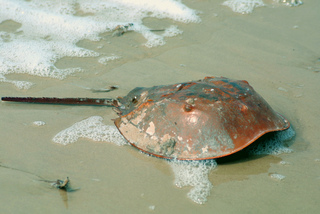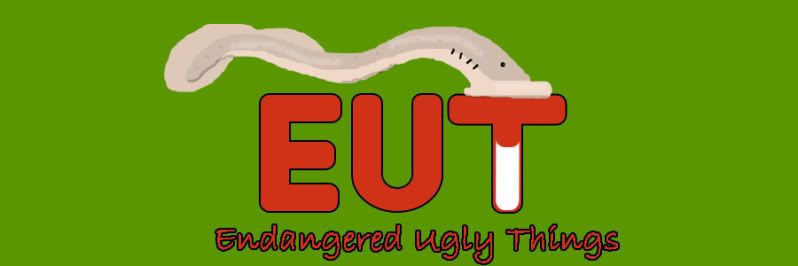Greg e-mailed me an article about an endangered rat from Australia that people are desperately trying to protect. Unfortunately, there seems to be little information on the little rodent, but I thought you readers might be interested. This week’s animal is one I’ve looked at for a while, and I’ve just now gotten around to writing about it.
 |
| Image by Joan Krispyn |
That scary-looking tail (formally called a telson) is about as sharp as a dulled pencil, and just about as dangerous. When adults migrate en masse onto the dry high-tide zone to lay eggs, flipping is a definite possibility. Right side-up, they present an armored shell to any seabirds. Upside-down, they are a bowl of seafood2. The long telson allows them to right themselves, hopefully before any hungry seagulls show up.
The eggs they lay hatch into “trilobite larvae,” who look enough like their namesake. These stay buried for a few weeks, until the right high tide rolls in. They then swim like mad until they are below the intertidal zone. A few days later, they molt into juveniles, and start living on the bottom, living in deeper waters as they age. As adults, they aren’t exactly picky about what they eat; they live off of whatever animals have burrowed into the sand.
I know, they’re not actually listed as endangered, but there are a number of people worried about their conservation. There are two main uses for them, both of which costal states are setting limits on. The first is use as bait for eel and conch fishing, and this seems to be the largest source human-induced mortality in the Horseshoe Crabs. The other use is in medical research, as they are harvested for their literal blue blood (it’s copper-based). This can be used to test pharmaceuticals, but don’t ask me how. Research and education programs are popping into existence to try to help save the Horseshoe Crab before it gets listed.
1Alas, the Touch-A-Shark pool had shut down years before.
2Upside-down, they also look like face-huggers from Alien.

2 comments:
Well, congrats on the graduating!
Your website rocks!You are a great cousin!I love the green saw fish! It is so cool!Congrats on the graduation!I also love the Mexican beaded lizard!
Post a Comment